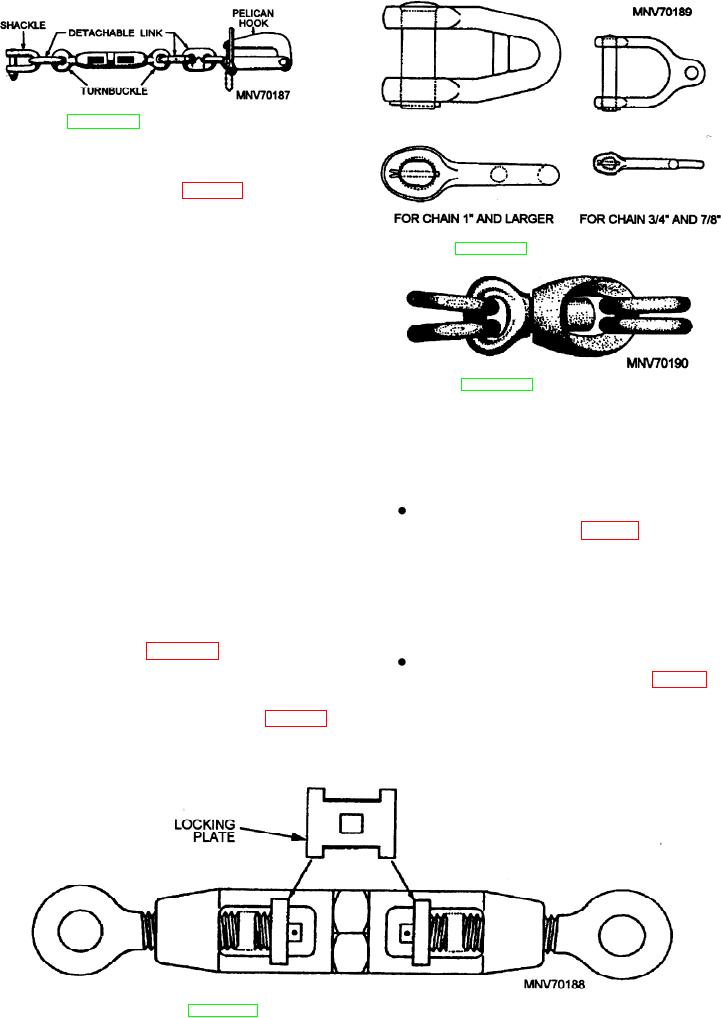
Figure 7-5.--Chain stopper.
housing chain stoppers (fig. 7-5) consist of a
turnbuckle inserted in a short section of chain
with a slip or pelican hook attached to one end of
Figure 7-7.--Mooring shackles.
the chain and a shackle at the other end. The
housing stopper is nearest the hawsepipe, the
riding stopper is farther aft. These stoppers are
secured by the shackles to permanent pad eyes
on the vessel's deck. When in use, a stopper is
attached to the anchor chain by straddling a link
with the tongue and strongback of the pelican
Figure 7-8.--Mooring swivel.
hook. Special housing chain stoppers, such as
the devil's claw or the paw1 type of stoppers,
normally are used with horizontal windlasses
and where space limitations do not permit use of
of the towing hawser. Towing chain stoppers should be
Navy standard stoppers. Although stoppers
used whenever the ship is being towed.
alone are more than adequate for holding the
MOORING SHACKLES. Mooring shackles
anchor, they should be backed up with the
are forged steel shackles (fig. 7-7) that are used
wildcat brake. Upon anchoring, you should first
to attach anchor chains to mooring buoys. All
set the wildcat brake band, then set the stoppers
mooring shackles, regardless of size, have a
tight, making sure you equalize the tension on
standard mortise (opening) of 7 inches. Mooring
them, so that one is not loaded more than the
shackles should not be used for any other
other. The wildcat should be left disconnected
purposes.
from the windlass. A Navy standard chain
stopper is shown in figure 7-5.
MOORING SWIVELS. Forged steel swivels,
Towing chain stoppers are similar to riding and
with two links attached at each end (fig. 7-8, are
housing chain stoppers, except that towing chain
used to moor with two anchors. They are
stoppers have locking plates added. (See fig. 7-6.)
inserted in the chain outboard of the hawse and
These locking plates prevent the towing chain stopper
keep the chain from twisting as the ship swings.
from unscrewing when subjected to the shock loading
Mooring swivels should be attached in the chain
Figure 7-6.--Anchor chain stopper modified for towing.
7-4

